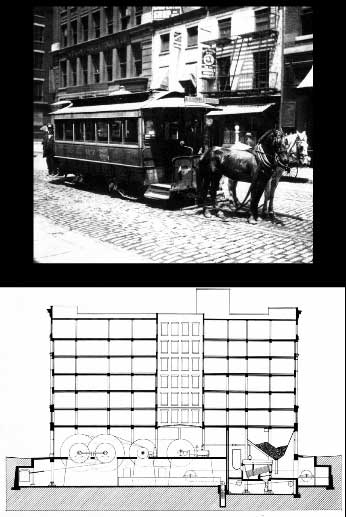

In the early part of the nineteenth century, transportation across the new street grid included walking and private horses and wagons. Public transportation consisted of stagecoaches. These were slowly replaced with street railroads which were horse drawn passenger coaches, or streetcars, traveling over rail tracks constructed at street level. The first street railroad in New York, the New York and Harlem Railroad, opened in 1832 on Fourth Avenue. Rose Hill and Kips Bay was served by the Third Avenue and Second Avenue street railroads that began operation in 1853 and 1869, respectively. Additional service on crosstown streets followed.
Before street railroads were electrified, cable cars were an alternative to horse drawn passenger coaches. Cable cars relied on a cable that ran underground to pull the passenger coaches. In Rose Hill and Kips Bay, cable cars were installed on the existing Third Avenue Street Railroad in 1893. Between 1893 and 1895, the Metropolitan Street Railway Company constructed a new Lexington Avenue cable car. This line ran from 22nd Street and Broadway, down 23rd Street to Lexington Avenue, and up Lexington Avenue to 105th Street. The railway company constructed the Lexington Building on 25th Street between Third and Lexington Avenues to serve as a powerhouse. Large generators in the basement of the building produced the steam that fueled the system. Today, the Lexington Building serves as the Baruch College library.